#electronvolt
Explore tagged Tumblr posts
Text
Work Function: Unlocking the Secrets of Electron Emission
The work function is a fundamental concept in solid-state physics and materials science, playing a crucial role in understanding electron emission from surfaces. This intrinsic property of materials describes the minimum energy required to extract an electron from a solid to a point immediately outside its surface.
At its core, the work function represents the energy barrier that electrons must overcome to escape the material. This barrier arises from the attractive forces between the electrons and the positive ions in the material's lattice structure. The strength of this barrier varies among different materials, leading to diverse applications in technology and research.
The derivation of the work function involves considering the energy states of electrons within the material and at its surface. We start by examining the Fermi level, which represents the highest occupied energy state at absolute zero temperature. The work function is then defined as the energy difference between the Fermi level and the vacuum level (the energy of a free electron at rest outside the material).
To calculate the work function, we must account for several factors:
The chemical potential of electrons in the bulk material
The electrostatic potential difference between the bulk and the surface
Surface dipole effects due to electron redistribution at the material's boundary
By combining these components, we arrive at a comprehensive understanding of the work function and its variations across different materials and surface conditions.
The implications of work function extend far beyond theoretical physics. It influences various phenomena and technologies, including:
Thermionic emission in vacuum tubes and cathode ray tubes
Photoelectric effect in solar cells and photomultiplier tubes
Field emission in electron microscopy and flat-panel displays
Schottky barriers in semiconductor devices
Read More about work function formula
#physics#workfunction#electronemission#quantumphysics#materialscience#solidstatephysics#surfacephysics#photoemission#thermionicemission#field emission#vacuumtechnology#nanotechnology#electronicdevices#electronmicroscopes#electronbeams#energy#quantummechanics#electronvolt#energybands#bandgap#fermilevel#surfacepotential#workfunctionmeasurement#photoelectron spectroscopy#XPS#UPS#fieldemission#vacuumtubes#electronoptics#electrondevices
0 notes
Text
i'm naming my child joule if its a boy or calorie if it's a girl. electronvolt if it's nonbinary
39 notes
·
View notes
Text

Wednesday SpaceTime 20250423 Series 28 Episode 49
Lucy takes a close look at the asteroid Donaldjohanson
NASA’s Lucy mission to explore Jupiter’s Trojan asteroids is about to undertake a close flyby of the main belt asteroid Donaldjohanson.


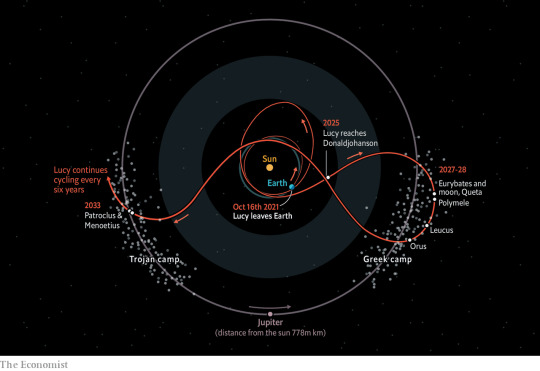



A new upper limit for the mass of Neutrinos
A new study has discovered the mass of one of the most enigmatic particles in the universe -- the neutrino -- is less than 0.45 electronvolts -- less than one-millionth the mass of an electron.
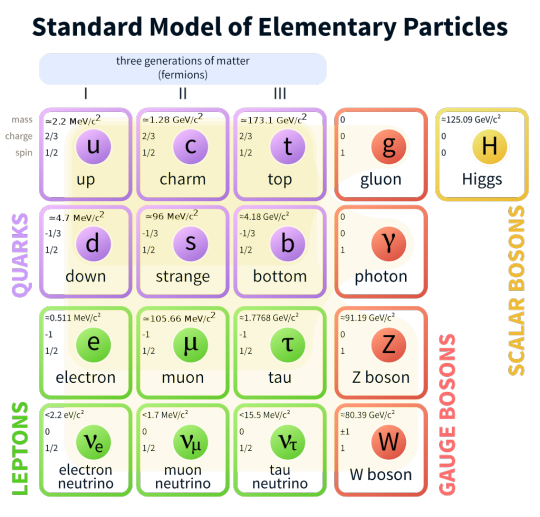


Intriguing Martian rocky outcrops discovered on the rim of Jezero Crater
NASA’s Mars Perseverance Rover has discovered a cornucopia full of intriguing rocky outcrops on the rim of Jezero Crater.


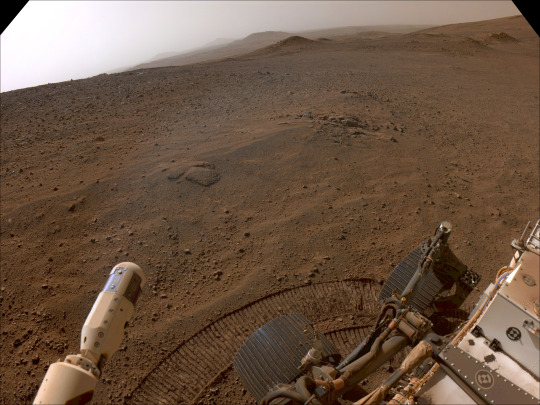



The Science Report
The weather now really dose suddenly go from boiling hot to freezing cold more than it used to.
A new study claims that lab-grown chicken nuggets could be a reality in the near future.

Psychologists are now warning about the potential dangers of having a relationship with your AI chatbot.
Alex on Tech: Google loses major court case
SpaceTime covers the latest news in astronomy & space sciences.
The show is available every Monday, Wednesday and Friday through your favourite podcast download provider or from www.spacetimewithstuartgary.com
SpaceTime is also broadcast through the National Science Foundation on Science Zone Radio and on both i-heart Radio and Tune-In Radio.
SpaceTime daily news blog: http://spacetimewithstuartgary.tumblr.com/
SpaceTime facebook: www.facebook.com/spacetimewithstuartgary
SpaceTime Instagram @spacetimewithstuartgary
SpaceTime twitter feed @stuartgary
SpaceTime YouTube: @SpaceTimewithStuartGary
SpaceTime -- A brief history
SpaceTime is Australia’s most popular and respected astronomy and space science news program – averaging over two million downloads every year. We’re also number five in the United States. The show reports on the latest stories and discoveries making news in astronomy, space flight, and science. SpaceTime features weekly interviews with leading Australian scientists about their research. The show began life in 1995 as ‘StarStuff’ on the Australian Broadcasting Corporation’s (ABC) NewsRadio network. Award winning investigative reporter Stuart Gary created the program during more than fifteen years as NewsRadio’s evening anchor and Science Editor. Gary’s always loved science. He studied astronomy at university and was invited to undertake a PHD in astrophysics, but instead focused on his career in journalism and radio broadcasting. Gary’s radio career stretches back some 34 years including 26 at the ABC. He worked as an announcer and music DJ in commercial radio, before becoming a journalist and eventually joining ABC News and Current Affairs. He was part of the team that set up ABC NewsRadio and became one of its first on air presenters. When asked to put his science background to use, Gary developed StarStuff which he wrote, produced and hosted, consistently achieving 9 per cent of the national Australian radio audience based on the ABC’s Nielsen ratings survey figures for the five major Australian metro markets: Sydney, Melbourne, Brisbane, Adelaide, and Perth. That compares to the ABC’s overall radio listenership of just 5.6 per cent. The StarStuff podcast was published on line by ABC Science -- achieving over 1.3 million downloads annually. However, after some 20 years, the show finally wrapped up in December 2015 following ABC funding cuts, and a redirection of available finances to increase sports and horse racing coverage. Rather than continue with the ABC, Gary resigned so that he could keep the show going independently. StarStuff was rebranded as “SpaceTime”, with the first episode being broadcast in February 2016. Over the years, SpaceTime has grown, more than doubling its former ABC audience numbers and expanding to include new segments such as the Science Report -- which provides a wrap of general science news, weekly skeptical science features, special reports looking at the latest computer and technology news, and Skywatch – which provides a monthly guide to the night skies. The show is published three times weekly (every Monday, Wednesday and Friday) and available from the United States National Science Foundation on Science Zone Radio, and through both i-heart Radio and Tune-In Radio.
#science#space#astronomy#physics#news#nasa#astrophysics#esa#spacetimewithstuartgary#starstuff#spacetime#hubble telescope#hubble#hubble space telescope
11 notes
·
View notes
Text
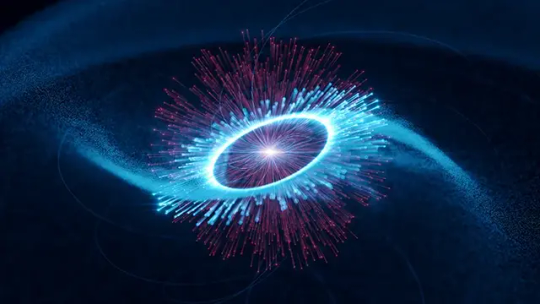
Scientists have detected the highest energy gamma rays ever from a dead star called a pulsar. The energy of these gamma rays clocked in at 20 tera-electronvolts, or about ten trillion times the energy of visible light.
Read more: https://rb.gy/w4xml
#nasa#astronomy#astrophotography#solar system#astrophysics#hubble#physics#james webb images#james webb space technology#nebula#pulsar#dead stars#amazing facts#amazing#i love universe#law of the universe#my universe#observable universe#linked universe#space exploration#outer space#study space#space#nasa scientists
128 notes
·
View notes
Text
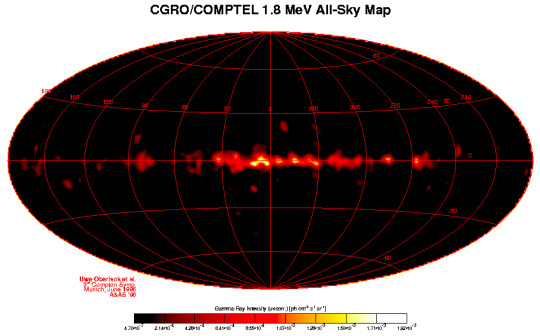
COMPTEL Explores The Radioactive Sky - July 24th, 1996.
"Diffuse gas clouds laced with radioactive aluminum atoms (Al26) line the plane of our Milky Way galaxy! Relying on the Compton Effect, the COMPTEL instrument onboard NASA's immense orbiting Compton Gamma Ray Observatory can "see" the 1.8 million electronvolt gamma rays emitted by the radioactive decay. COMPTEL's first ever survey image of the entire sky in the light of gamma rays produced by this exotic radioactivity is shown above. The galactic plane is horizontal, passing through the galactic center in the middle of the picture, as indicated by the superposed coordinate grid. The radioactive Al26 clouds are seen to lie in clumps near the plane, with some slightly above and below it. The brightest feature looks like a mysterious inverted "V", just to the left of the center. Al26 decays to magnesium (Mg26) with a half-life of about a million years, a very short time compared to the age of the galaxy - so the clouds must have been produced relatively "recently." COMPTEL astronomers explored several origins for the radioactive clouds, including nuclear processing (nucleosynthesis) by aging massive stars and supernova explosions. Because they are generally thought to be associated with short lived massive stars, the radioactive clouds were expected to be located near sites of recent star formation."
13 notes
·
View notes
Text
Powerful cosmic rays believed to be from nearby pulsar discovered

Scientists have discovered high-energy cosmic rays that may originate from a nearby pulsar, after over a decade of data collection. These cosmic electrons and positrons, with energies over 10 tera-electronvolts, are 1000 billion times more powerful than visible light. Researchers from the HESS observatory in Namibia speculate that a pulsar, a few thousand light years away, could be the source.
#space#nasa#universe#art#astronomy#science#galaxy#moon#stars#cosmos#spacex#scifi#astrophotography#photography#earth#astronaut#love#alien#nature#mars#spaceart#sky#spaceexploration#planets#aliens#spaceship#spacetravel#rocket#digitalart#design
6 notes
·
View notes
Text
A summary
So, the collider project was the crowning achievement of my career. (Still pissed about it getting blown up, but whatever, I can say that until I'm blue in the face.)
But fuck it, it still ran and it still gave me data and I'm still going to claim the results, so here goes.
...
...
Oh, wait, did you expect me to post my actual data?? HAHA NO. You're getting a summary, because I'll be damned if I post my actual data on a public-facing report log. Fuck you. Read about it in the paper I'll eventually publish, with my name on it. I am not going to let people just nick everything I've been working for.
But here you go. Things my collider has suggested or proved:
You can make micro black holes with as little energy as 9.4 tera-electronvolts (TeV) (aka, you can make them in a sufficiently powerful collider). (The LHC has a max design capability of 6.5 TeV per beam so far. My collider was supposed to start at 4.5 TeV and scale up to 8 TeV after upgrades (for a total of 16 TeV).)
Micro black holes exist. (These are just tiny, tiny black holes. They’re actually quite safe, so long as you aren’t standing near them. They pop into existence, then evaporate (see below) and disappear.)
There’s more than three spatial dimensions. (Also see here.) (Considering only three spatial dimensions, the “black hole threshold” is WAY too high, and you won’t be able to make a black hole of any size in a TeV-capable collider. The Planck mass (a natural unit of mass derived from only natural constants) is indicated to be a minimum limit on black hole masses - and the calculations just don’t allow black holes in the TeV range when using only three dimensions plus time. So, in order for black holes to be possible in the TeV range, you have to have a way to scale gravity in a way that’s stronger than in our three spatial dimensions. Otherwise, you won’t have the right conditions for a black hole. With more than three spatial dimensions (personally, I prefer M-theory, a version of string theory which favors ten spatial dimensions plus time), gravity can operate throughout ALL those dimensions, and can scale differently, lowering the “black hole threshold” into the TeV range.)
Gravity works in more than 3 dimensions. (In order for everything above to work, gravity has to permeate more than three dimensions in order to actually scale properly.) (Additionally, the fact that appearing and collapsing black holes can “grab onto” space enough to shred it indicates that gravity does indeed affect space itself.)
Black holes do indeed evaporate. (This has been accepted for a long time - Hawking proposed it in the 70’s, hence why it’s often referred to as Hawking radiation. The old idea that “nothing escapes a black hole”? That’s a trick statement, because technically, black holes DO radiate stuff, and lose mass and energy when they do. (hence the nickname “evaporation”). We’ve never had experimental proof of it before, but now, we know from looking at the data from the collider’s test runs that the micro black holes DID indeed evaporate and disappear in a flash of energy.)
More evidence that gravitons should be a thing. (String theories predicted a graviton, a subatomic elementary particle that regulates gravity.)
Warping space can shred the fabric of spacetime. (This is where the magic happens! The collider creates streams of micro black holes, which have gravitational pull and “bend” space a little bit. Then, the micro black hole disappears, and space snaps back. However, if you have a ton of micro black holes doing that, it’s pulling space in all sorts of rather violent directions all at once, and actually rips the space. That’s where the dimensional “portal” opens up.)
Space is, indeed, elastic to some degree - either that, or it can move fluidly enough that it looks like it’s healing the tears. (The dimensional “portals” were only open while the collider was on, and closed up when the collider turned off.)
Space DOES seem to have some form of “surface tension” or resistive buoyancy - possibly gravity? - that pushes back. (When the original Parker got pushed into the beam by Green Goblin, it took effort to hold him there, as if he were being pushed back.)
Parallel universes exist.
Different laws of physics exist in those universes. (This one’s a little bit less hard-proven and a little more “strongly suggested,” in that the spiders’ glitching seems to almost be on an atomic level, hinting at different underlying base physics.)
There’s some as-of-yet unnamed phenomenon which allows parallel-universe “versions” of a person to be summoned by throwing DNA into the collider beam.
I could think of more, but I think that’s enough stuff for today.
Footnotes: Hey folks! Long time, no see!
First things first, don't take anything here as truth. This is a lot more speculative fiction!
Second, I'm not starting this blog up again. I don't have the time for it - each post typically took days to weeks to research and write, even though they're short posts, and while I loved writing them, I just can't fit it in.
However, I found this in my drafts today - it's been sitting here since 2019! - and I'm not sure why I never posted it. It's something I remember putting a LOT of work into, though, and someone might find it interesting! I remember I wanted to list out possible things that Liv's collider experiments would have implications for, and there's a number of things here about the fictional collider's functions that I hadn't gotten to touch on.
Honestly, I don't thoroughly remember enough to vet the concepts fully as of today, but it's all fictional anyway. Like I said, don't take anything here as truth! If one could operate a collider like Liv’s, and get those particular results, then it’s POSSIBLE it would imply things, BUT in OUR universe, they haven’t been proven (and, again, I'm not a physicist! I'm a hobbyist armed with books and Google, and there's a high chance I've misinterpreted things here or there).
Citations are in-text as links.
Concepts that already existed: These are generally accepted as either a "thing" or "viable theory" by physicists. Micro black holes, Hawking radiation, more than 3 dimensions, gravitons, M-theory.
Concepts that already existed, but are kind of shaky: making micro black holes in a collider, parallel universes.
Concepts that I totally made up based on the movie (and thinking way too hard about things): shredding spacetime, space having surface tension, different laws of physics in parallel universes, the “as-of-yet unnamed phenomenon” of the last one.
Voilá! If anyone has questions about any of the science here, feel free to shoot me a message or an ask! I’ve tried pretty hard to include real-life info to build off of, and to clearly indicate what parts I’m just making up!
5 notes
·
View notes
Link
Personally, I prefer the term ‘evolved star’ to ‘dead star’ FYI.
9 notes
·
View notes
Text
A Massive Particle Blasted Through Earth and Scientists Think It Might Be The First Detection of Dark Matter
In February 2023, an underwater telescope called KM3NeT, anchored several miles beneath the Mediterranean Sea, recorded the brightest particle track ever seen in the universe. A single flash raced through the instrument’s glass spheres, and computer checks showed that the parent particle must have carried about 220 peta-electronvolts of energy. That figure is so large it dwarfs the beams at the…
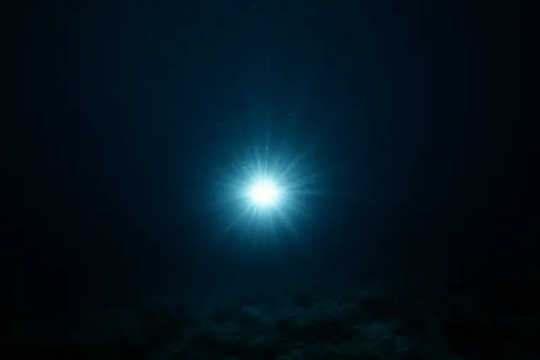
View On WordPress
0 notes
Text
You see unknownPerson has reblogged a poast to his tumblr blog [42] and are desperate to do anything else besides test asphalt. SB began corresponding with UP! SB: good morning sleepyhead you're very beautiful UP: The best part about living on the free is that I haven't even seen the broad side of an alarm clock in three entire fast years. UP: You're quite the looker in a hi-vis vest. SB: starting the day off paranoid? UP: The Giddyness Matrix and the Paranoid Deluziometer feed upon one another. A proportional relationship. SB: whats the constant that places it in reality UP: Here's one I made up just now for you. ն = 0.0702 electronvolts per second. On the Paranoid side. Thus giving us Ꮐ = նƤ UP: The data trends indicate that I require a large increase in giddyness to increase the paranoia. SB: are you happy? UP: Like you would not believe. The sun in shining, the birds are chirping, I get to hang out and play a video game with my friends all day. NG is gonna cast a spell. UP: It all feels so. Possible. SB: wait a second do your matrix and indices work with fractional numbers as opposed to quanta? You only have a maximum of ten swords. UP: You want me to prove by induction the inner machinations of my personality nineteen minutes after I woke up? You want me to rigorously prove that human feelings have a correlation to quantum dynamics at 9:16 in the morning? SB: yes yes i do anonymous person theres a nobel prize in it for you #250: > #248: > #1: >
1 note
·
View note
Text

TESSERACT joins the hunt for dark matter
For decades, people have been trying to directly detect dark matter: the missing mass in our universe. Now, there's a new, super-sensitive detector on the case—and even though it's still in the research and development phase, it's already been able to search for kinds of dark matter that other detectors can't reach.
Historically, most dark matter searches have hunted for two particular kinds of dark matter: ultra-light axions and heavier WIMPs (weakly interacting massive particles). But the new TESSERACT experiment searches in between these regimes, looking for low-mass dark matter that's about a hundred to a thousand times lighter than a WIMP.
"It's a kind of Goldilocks dark matter," said Dan McKinsey, the project director for TESSERACT and a researcher at the Department of Energy's Lawrence Berkeley National Laboratory (Berkeley Lab), which leads the experiment. "There's this untested window that gives us an opportunity for discovery. Our detector has the sensitivity, even at this early stage, that allows us to look for dark matter candidates no one has been able to look for before."
The TESSERACT (Transition-Edge Sensors with Sub-EV Resolution And Cryogenic Targets) collaboration also includes researchers at Argonne National Laboratory, Caltech, Florida State University, IJCLab (Laboratoire de Physique des 2 Infinis Iréne Joliot-Curie), IP2I (Institut de Physique des 2 Infinis de Lyon), LPSC (Laboratoire de Physique Subatomique et de Cosmologie), Texas A&M University, UC Berkeley, the University of Massachusetts Amherst, the University of Zürich, and QUP (the International Center for Quantum-field Measurement Systems for Studies of the Universe and Particles).
In a paper posted on March 5 to the preprint server arXiv, TESSERACT researchers presented their first dark matter results, finding no evidence of low-mass dark matter between masses of 44 MeV/2 and 87 MeV/2 (where MeV is millions of electronvolts).
For comparison, the mass of a proton is slightly less than 1,000 MeV/2, and the most recent results by LZ, the world's best WIMP experiment, searched for dark matter down to 9,000 MeV/c2. This is the first time any experiment has searched for nuclear recoil signals from dark matter with mass below 87 MeV/2.
If researchers were to find dark matter in this new region, they'd need a new explanation for how it interacts. For example, while WIMPs interact through the weak force, low-mass dark matter could indicate an undiscovered fifth fundamental force at play.
While many advanced dark matter experiments use huge volumes of detector material or giant magnets, TESSERACT's power comes not from its size but its sensitivity. The new world-leading results came from carefully instrumented and shielded silicon chips that are one square centimeter, roughly a quarter of the size of a postcard stamp. These detectors were designed at UC Berkeley and fabricated at Texas A&M University.
TESSERACT uses transition-edge sensors, a type of superconducting detector, that operate at around 8 millikelvin (nearly negative 460°F). Adding even a minuscule amount of heat—say, from a lightweight dark matter particle bumping into the chip and depositing some energy—can trip the sensor.
"We've been working to make the sensors very consistent and high-fidelity at very low temperatures," said Vetri Velan, a Chamberlain Fellow at Berkeley lab and co-lead of the analysis. "The lower the transition temperature of the sensor, the better the noise performance and the better the sensitivity to dark matter. So it's all about how sensitive we can make these sensors."
Researchers have been conducting R&D since 2020 to increase the sensitivity and reduce (or account for) potential sources of noise that might hide a dark matter signal. That includes finding the right recipe for manufacturing the sensors and reducing background vibration and electromagnetic interference in the dilution refrigerator that houses the silicon chip. The detector's small size is also an asset; less area means fewer background interactions.
TESSERACT addresses a problem common to sensitive detectors: a persistent but unexplained source of excess noise at low energies, the same region where dark matter might lurk. The experiment's approach to manufacturing and shielding the detectors has reduced that background rate 30-fold.
"The devices that we are running are so quiet compared to pretty much any other device that's ever been run," said Michael Williams, a Chamberlain Fellow at Berkeley Lab and co-lead of the analysis. "And there's a really large overlap between the work we're doing on these devices and other quantum material science. As we improve these transition-edge sensors for ourselves, we can use the same engineering to make better qubits and quantum computers."
An experiment designed to change
Most dark matter experiments are placed deep underground, using thousands of feet of rock to help block out particles from space that can interact in the detector. With this first detector prototype, TESSERACT has already explored new spaces for dark matter from what is essentially Earth's surface: the sub-basement of UC Berkeley's Birge Hall (not far from the site of John Clauser's Nobel Prize-winning experiment on photon entanglement that set the stage for our current quantum revolution).
But to further improve the detectors' sensitivity, researchers plan to install the full experiment beneath 1,700 meters (5,600 feet) of rock in the deepest underground laboratory in Europe: France's Modane Underground Laboratory. Construction is slated to begin in 2025, with the experiment coming online around 2029 and searching for dark matter with masses as low as 10 MeV/2. The experiment will grow from its current footprint, roughly as big as a phone booth, to a six-foot cube.
The heart of TESSERACT is its transition-edge sensors, but researchers are also developing additional detector modules that improve their odds of spotting dark matter. HeRALD (Helium Roton Apparatus for Light Dark matter) will be the first time that a dark matter experiment uses superfluid helium, and will incorporate TESSERACT's silicon chips as the detector's sensors.
SPICE (Sub-ev Polar Interactions Cryogenic Experiment) will use single crystals of sapphire and gallium arsenide. And the science teams in France will contribute a sensor made of silicon and germanium. The different modules will give researchers unique ways to search for dark matter and test different theories.
The shielding that will surround the experiment is designed to come apart, making it possible for researchers to easily access TESSERACT's components and switch things out in a matter of days. If HeRALD sees intriguing signs of dark matter, scientists can swap in SPICE and cross-check the result (or vice versa). In contrast, many advanced dark matter experiments are built like a ship in a bottle; it would take them months or years to open up and swap components, if it could be done at all.
Researchers are currently continuing to develop HeRALD and SPICE and testing new manufacturing processes to further improve the transition-edge sensors. "To get TESSERACT to the sensitivity we want, these detectors have to get even better, even though they're already the best in the world," Williams said.
Improved detectors and a subterranean home will let the experiment search for lower mass particles and increase the chance of detecting ultra-rare dark matter interactions with regular matter.
"This result is the first indication that we can open up this new regime of low-mass dark matter to experimental testing," McKinsey said. "It's a lot of fun to have a small experiment running in the basement that can test new ideas for dark matter. This is really just the opening salvo for TESSERACT. We expect to have many more results over the next decade."
TOP IMAGE: Maggie Reed, a graduate student researcher at UC Berkeley, works on TESSERACT’s dilution refrigerator. The setup holds and cools the dark matter detectors. Credit: Marilyn Sargent/Berkeley Lab
LOWER IMAGE: TESSERACT uses special transition-edge sensors, the thin strips visible on square silicon chips. Credit: Marilyn Sargent/Berkeley Lab

3 notes
·
View notes
Text
Scientists have used a pair of lasers and a supersonic sheet of gas to accelerate electrons to high energies in less than a foot. The development marks a major step forward in laser-plasma acceleration, a promising method for making compact, high-energy particle accelerators that could have applications in particle physics, medicine, and materials science. In a new study soon to be published in the journal Physical Review Letters, a team of researchers successfully accelerated high-quality beams of electrons to more than 10 billion electronvolts (10 gigaelectronvolts, or GeV) in 30 centimeters. (The preprint can be found in the online repository arXiv). The work was led by the Department of Energy's Lawrence Berkeley National Laboratory (Berkeley Lab), with collaborators at the University of Maryland. The research took place at the Berkeley Lab Laser Accelerator Center (BELLA), which set a world record of 8-GeV electrons in 20 centimeters in 2019. The new experiment not only increases the beam energy, but also produces high-quality beam at this energy level for the first time, paving the way for future high-efficiency machines.
Read more.
12 notes
·
View notes
Text
Why mess about with so many units when electronvolts is all you need?
Energy from a reaction? -> eV
Temperature? -> eV
Pressure? eV/m^3
Wavelength of a photon? It’s energies the same thing -> eV
Velocity of an ion? Mass of a particle? Stopping power of a material? Ionisation energy?
Even journals that sensible demand SI units don’t complain about the universality of the cursed electronvolt.
#I find it funny when news articles report temperatures reached in fusion reactors in their headlines in celsius or kelvin#I have no idea what temperatures my plasmas are in kelvin#I consider 1 eV to be super cold. Which is around 11300°C#I found out I had simulations running with tungsten tiles that were over 1100K#(which is much high than it should have been)#because in the config someone had just set it to a ‘tiny’ 0.01 eV#plasma physics#fusion ramblings#phdblr
1 note
·
View note
Text
CMS experiment at CERN weighs in on the W boson mass
CMS experiment at CERN weighs in on the W boson mass The CMS experiment at CERN is the latest to weigh in on the mass of the W boson – an elementary particle that, along with the Z boson, mediates the weak force, which is responsible for a form of radioactivity and initiates the nuclear fusion reaction that powers the Sun. At a seminar held at CERN today, the CMS collaboration reported how it has analysed proton–proton collision data from the second run of the Large Hadron Collider, the Laboratory’s flagship particle accelerator, to make its first mass measurement of this fundamental particle. The result is the most precise measurement of the W mass made so far at the LHC, and is in line with the prediction from the Standard Model of particle physics and with all previous measurements, except the measurement from the CDF experiment at the former proton–antiproton Tevatron collider at Fermilab. In the Standard Model, the W mass is related closely to the strength of the interaction unifying the electromagnetic and weak forces and to the masses of the Higgs boson and the top quark, which constrain its value to 80353 million electronvolts (MeV) within an uncertainty of 6 MeV. Measuring the W boson mass with high precision therefore makes it possible to test whether or not these properties all align in a way that is consistent with the Standard Model. If they don’t, the cause could be new physics phenomena such as new particles or interactions. Since its discovery at CERN about 40 years ago, the W boson has had its mass measured ever more precisely by several collider experiments, including ATLAS and LHCb at the LHC. In 2022, a surprisingly high value of its mass measured by the CDF experiment plunged the particle into a “midlife crisis”. The CDF W boson mass, 80433.5 MeV with an uncertainty of 9.4 MeV, differed significantly from the Standard Model prediction and from the other experimental results, calling for more studies. In 2023, the ATLAS collaboration, which provided its first W boson mass measurement in 2017, released an improved measurement based on a reanalysis of proton–proton collision data from the first run of the LHC. This improved result, 80366.5 MeV with an uncertainty of 15.9 MeV, lined up with all previous measurements except the CDF measurement, which remains the most precise to date, with a precision of 0.01%. The CMS experiment has now contributed to this global endeavour with its first W boson mass measurement. The keenly anticipated result, 80360.2 with an uncertainty of 9.9 MeV, has a precision comparable to that of the CDF measurement and is in line with all previous measurements except the CDF result. “The wait for the CMS result is now over. After carefully analysing data collected in 2016 and going through all the cross checks, the CMS W mass result is ready,” says outgoing CMS spokesperson Patricia McBride. “This analysis is the first attempt to measure the W mass in the harsh collision environment of the second running period of the LHC. And all the hard work from the team has resulted in an extremely precise W mass measurement and the most precise measurement at the LHC.” “W mass measurements are very challenging, involving delicate measurements and theoretical modelling of the production of the W boson and its decay into a lepton (here, a muon) and a neutrino that escapes detection,” explains incoming CMS spokesperson Gautier Hamel de Monchenault. “By exploiting the ability of the CMS detector to measure muons with high precision and using the latest and most advanced theoretical ingredients, some of which were tested by a cross-checking analysis, we attained this record level of precision.” The result showcases once again the exceptional performances of the LHC and its detectors, which continue to push the precision frontier and put the Standard Model and its extensions to ever more stringent tests. Further data from the… https://home.cern/news/press-release/physics/cms-experiment-cern-weighs-w-boson-mass (Source of the original content)
0 notes
Link
The Large High Altitude Air Shower Observatory (LHAASO) has discovered a giant ultra-high-energy gamma-ray bubble structure in the Cygnus star-forming region, which is the first time that the origin of cosmic rays with energy higher than 10 Peta-Electronvolt (PeV) has been discovered. This achievement was published in the form of a cover article in Science Bulletin on Feb. 26.
0 notes
Text
"High-energy" is right; 3-124 electronvolts, to be precise
WAIT TRUMP'S MEDIA TOUR TEAM PULLED AN NFT/CRYPTO UV LIGHT STUNT AND BLINDED A BUNCH OF PEOPLE AT HIS RALLY IN TUCSON!?!?!?! AND NO ONE TOLD ME!?!??!?!
2K notes
·
View notes